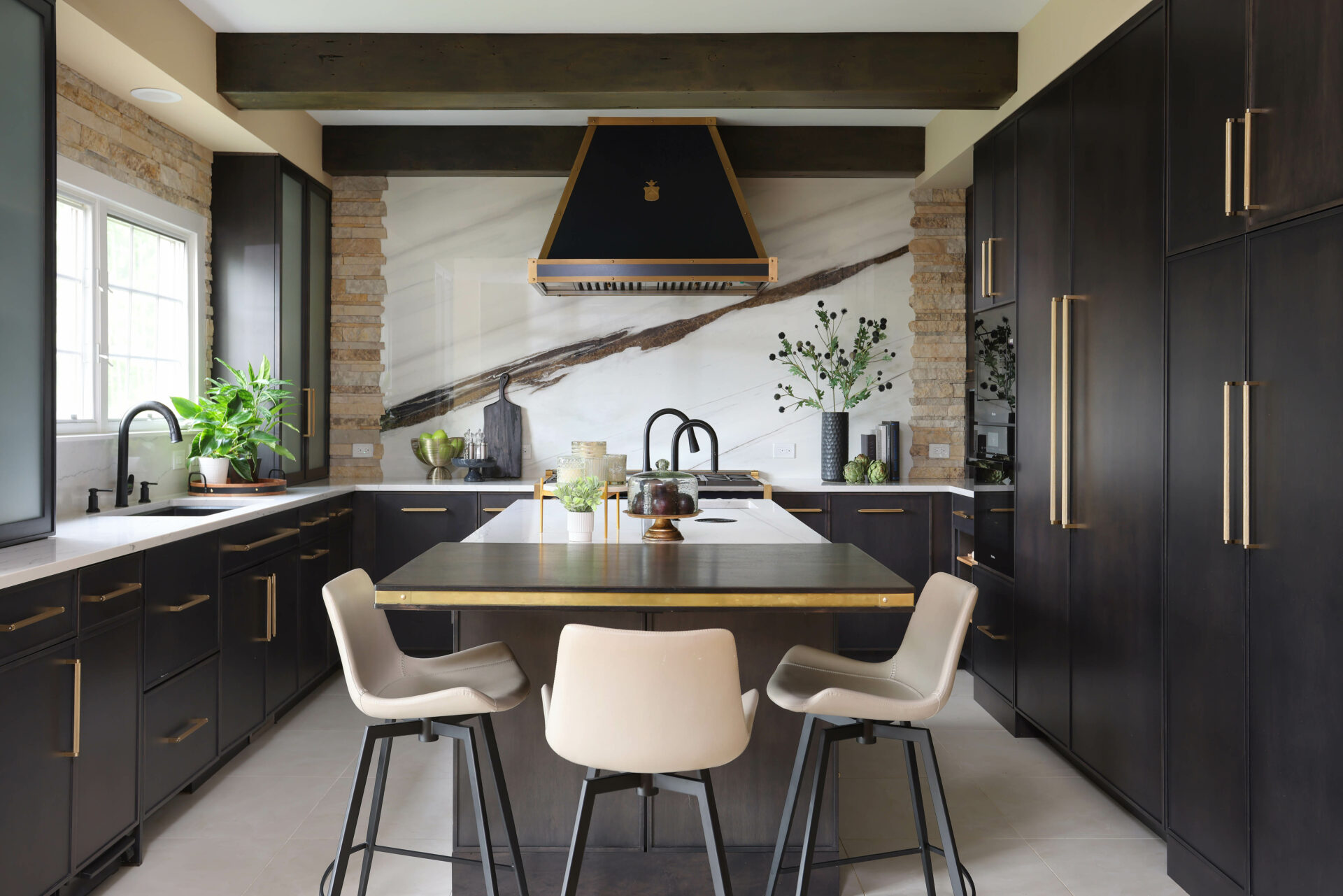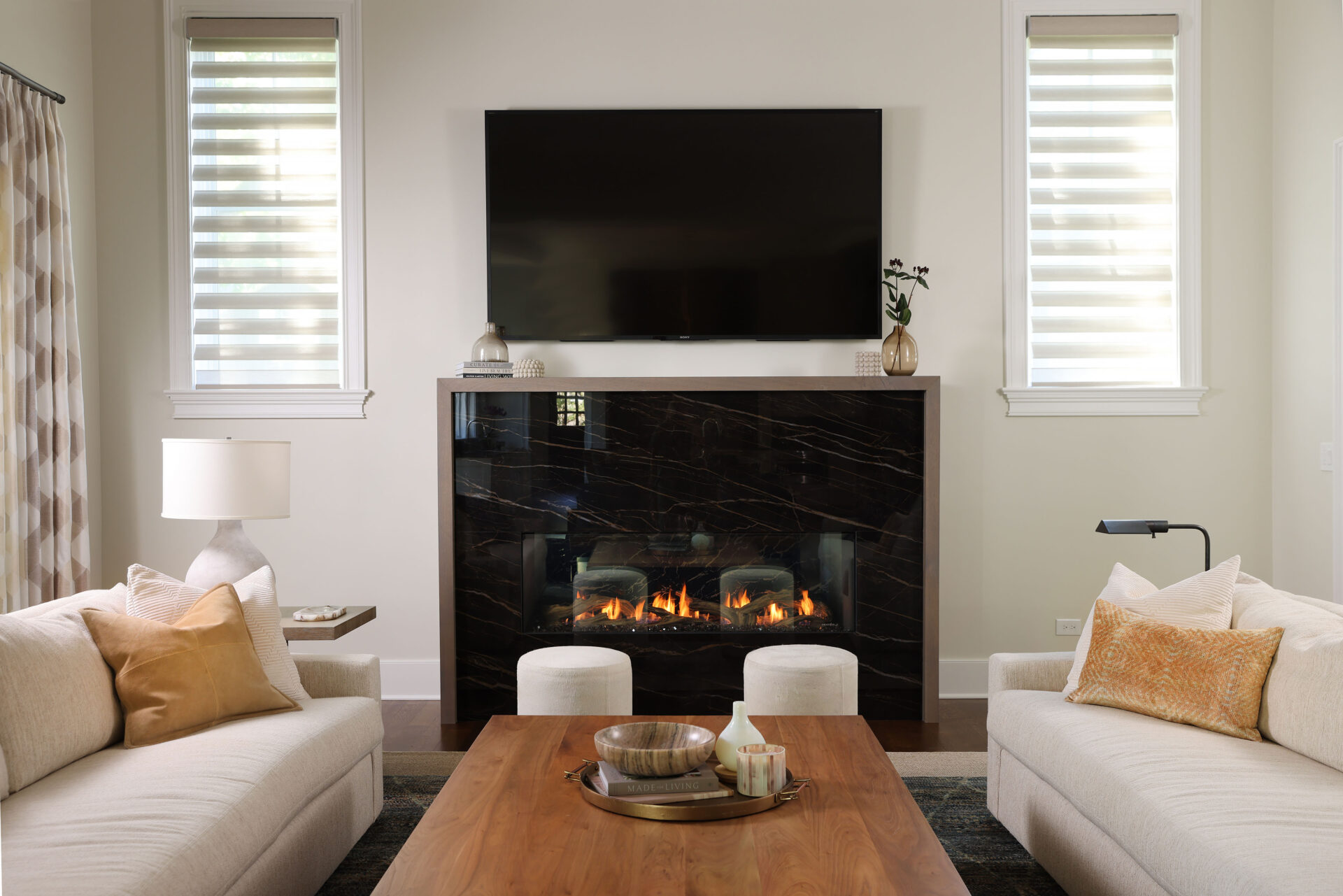The Pros and Cons of Porcelain Slabs
 Statement slabs have found their place in kitchens and bathroom designs of all styles, but just because you’ve fallen in love with the look of a slab, doesn’t mean you’re relegated to natural stone. “We’re seeing a lot more porcelain on the market now,” says Normandy Designer Becca Ruggiero. “It’s quickly becoming a go-to alternative to natural stone and even quartz.”
Statement slabs have found their place in kitchens and bathroom designs of all styles, but just because you’ve fallen in love with the look of a slab, doesn’t mean you’re relegated to natural stone. “We’re seeing a lot more porcelain on the market now,” says Normandy Designer Becca Ruggiero. “It’s quickly becoming a go-to alternative to natural stone and even quartz.”
Since there are pros and cons to this rising trend, we talked with Becca about things to keep in mind if you’re considering a porcelain slab for your home remodeling project.
Both porcelain and quartz require less maintenance than natural stone, as they’re more resistant to staining and etching, unlike some natural stone. But buyers are drawn to the visual depth of porcelain, according to Becca. “Porcelain is a man-made material, but it has higher definition and more intricate patterning than quartz,” Becca says. “If someone says they want a Calacatta backsplash, but they don’t want the upkeep that can come along with marble, a porcelain slab may be a great substitute.”
Due to its thin, light nature, porcelain is becoming a popular choice for range backsplashes since it allows you to push your range closer to the back wall for a more seamless look — unlike some thicker, natural stone options. And porcelain, unlike many varieties of quartz, is more resistant to heat. Just like any slab, it’s easier to clean sans crevices or grout.

This is one of the reasons why porcelain slabs work better in low-traffic areas and for placements that don’t require drilling or mitering, for example as a kitchen backsplash, fireplace feature wall, or statement wall in a shower. And also why — while porcelain slabs can have a lower price tag than some exotic stone slabs — it’s not necessarily cheaper from a labor standpoint.
“You will need a skilled fabricator to make and install your porcelain slab,” Becca says. “Even the best fabricators can run into issues with breakage.”
Porcelain slabs have a high-end look for minimal maintenance, and their slim nature makes them popular among not just consumers, but designers alike. “People always ask for products that are easy to maintain, and porcelain definitely falls into that category,” Becca says. “It’s just important to be mindful of placement and proper installation.”
If you would like to talk more about incorporating a beautiful slab into any area of your home, reach out to Becca to discuss more about your remodeling project. Schedule a free consultation here. For more design inspiration, you can follow Normandy Remodeling on Facebook, Instagram, LinkedIn and Pinterest — or sign up for our newsletter!




